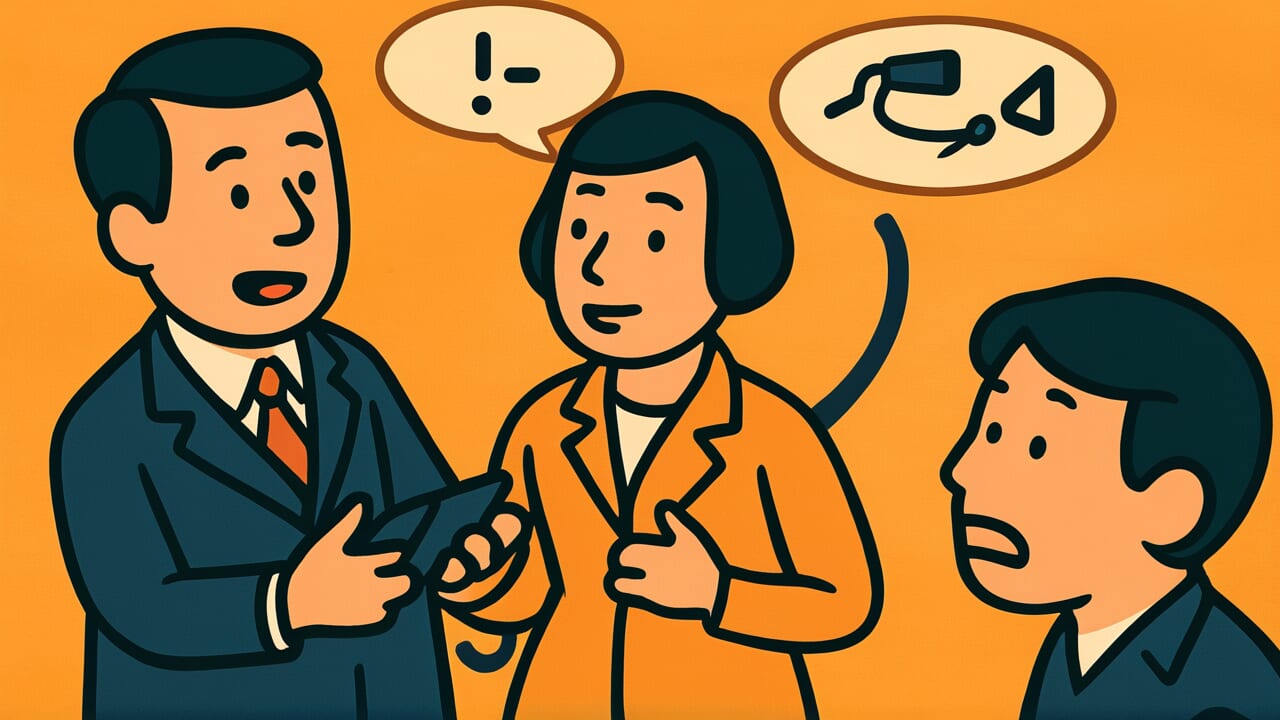How to Read “Saying is easy, doing is hard”
Iu wa yasuku okonau wa katashi
Meaning of “Saying is easy, doing is hard”
This proverb means that talking about something is simple, but actually doing it is difficult. Anyone can make plans, give advice, or talk about ideals. But turning those words into action and achieving results is much harder than we imagine.
This proverb is used mainly in two situations. First, when reflecting on your own behavior. You use it to remind yourself when you’ve set goals but haven’t followed through.
Second, it’s used to respond to irresponsible comments from others. When someone who has never actually done something casually says “just do this,” this proverb serves as a rebuttal.
In modern society, anyone can easily share opinions on social media. However, there’s still a huge gap between posting something and actually doing it.
This proverb reminds us of the difference in weight between words and actions. It remains an important teaching even today.
Origin and Etymology
The origin of this proverb is thought to be influenced by ancient Chinese philosophy. It’s particularly connected to the Confucian concept of “unity of knowledge and action,” which emphasizes matching what you know with what you do.
Looking at the word structure, it uses contrasting verbs: “saying” and “doing.” Each is paired with opposite adjectives: “easy” and “hard.” This contrast structure vividly highlights the essential difference between human language ability and execution ability.
This expression appears in Japanese literature from the Edo period. This suggests it was widely known at least by that time. The samurai code of that era also emphasized actual actions over empty words.
Within this social context, the proverb became deeply embedded in people’s hearts.
What’s interesting is that this proverb isn’t just criticism. It was born from calmly observing an essential human characteristic. There’s always a big gap between talking about ideals and making them reality.
Our ancestors frankly acknowledged this fact and preserved it in words.
Usage Examples
- Declaring you’ll go on a diet is easy, but saying is easy, doing is hard—I gave up after three days
- Anyone can talk about solutions to environmental problems, but saying is easy, doing is hard—actually changing your lifestyle is tough
Universal Wisdom
Humans have a curious trait. We can draw perfect plans in our minds and imagine ideal futures. Yet bringing those visions into the real world is surprisingly difficult. Why is this?
The world of words has no constraints. In imagination, time, effort, and pain don’t exist. When we say “just do this,” we leap over obstacles, skip difficulties, and see only ideal results.
But the real world is different. There’s gravity, time, fatigue, and unexpected obstacles.
This proverb has been passed down for hundreds of years because it perfectly captures this essential human nature. We’ve all struggled with the gap between ideals and reality.
We’ve felt disappointed in ourselves when our plans are perfect but we can’t execute them. We’ve felt frustrated with others who give advice so easily.
However, this proverb isn’t just criticism. Rather, it contains deep understanding and kindness toward humanity. “Doing is hard” isn’t just your problem. It’s the fate of being human.
That’s why people who actually take action deserve respect. Even taking a small step has value.
When AI Hears This
When we communicate something with words, we use surprisingly little information. For example, the instruction “exercise every day” is just a few words. But think about the information needed to actually execute this.
What time to wake up, what clothes to wear, which muscles to move and how, breathing rhythm, hydration timing. If you described all this completely in words, tens of thousands of words wouldn’t be enough.
In information theory, the minimum program length needed to reproduce information is called “Kolmogorov complexity.” Words are like compressed files that expand in the listener’s mind.
But here’s the trap. The brain receiving the compressed data “exercise” automatically expands it into a simple image. Something like a refreshing vision of yourself jogging.
But actual execution requires thousands of times more specific decisions and movements. In other words, the mental expansion when understanding words is just a “low-resolution preview.”
Execution is the work of fully expanding that compressed file, and doing so in real time continuously.
The moment we feel “I understand” is actually just receiving compressed data. The gap between that and the truly necessary information creates the difficulty difference between saying and doing.
Lessons for Today
What this proverb teaches modern people is the value of humility and action. Posting opinions on social media is easy. But actually moving to solve problems is a completely different level of difficulty.
That’s why we need to ask ourselves if we’re taking action before casually criticizing others.
At the same time, this proverb teaches respect for people who take action. Even if imperfect, even if small, someone who actually takes a step forward deserves praise. The attitude of challenging without fearing failure is true courage.
If you have goals yourself, try reducing your words first. Pour the energy you’d use for declarations into actual action. And start with small steps.
Taking action today, even imperfectly, is far more valuable than talking about perfect plans.
This proverb acknowledges the difficulty of taking action, yet encourages us to become people who act. From the world of words to the world of reality. Having the courage to take that step is the key to changing your life.



Comments